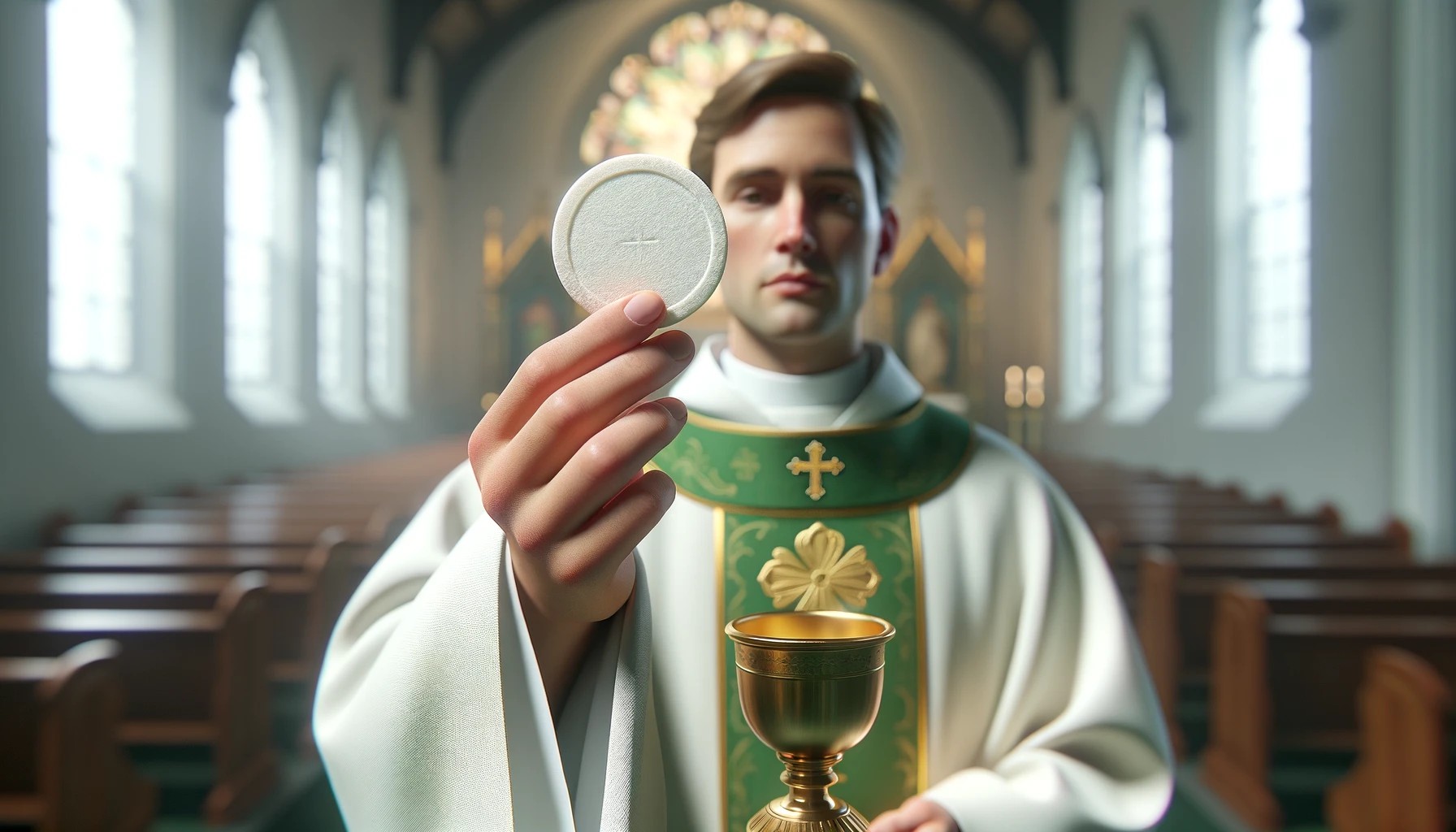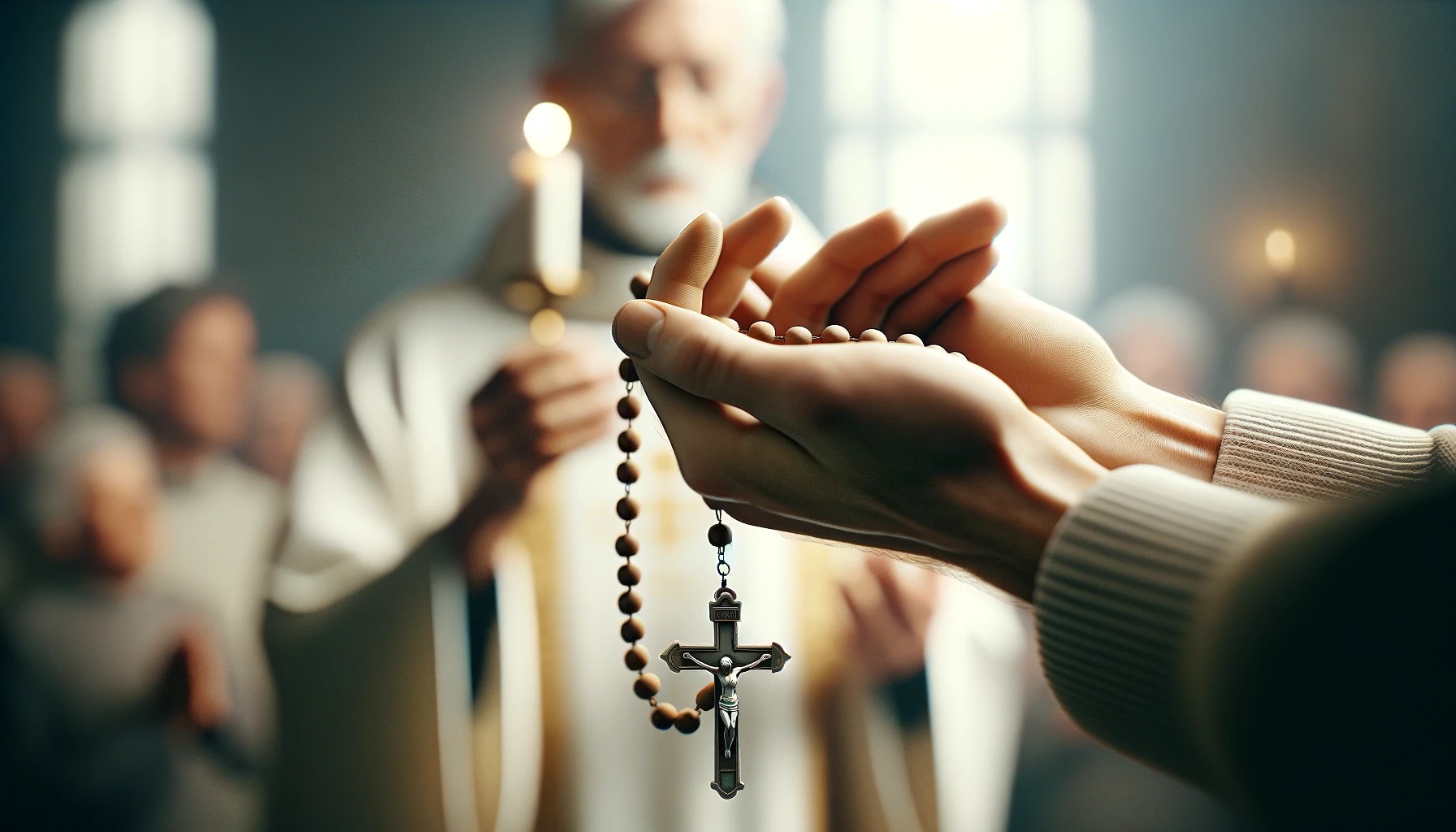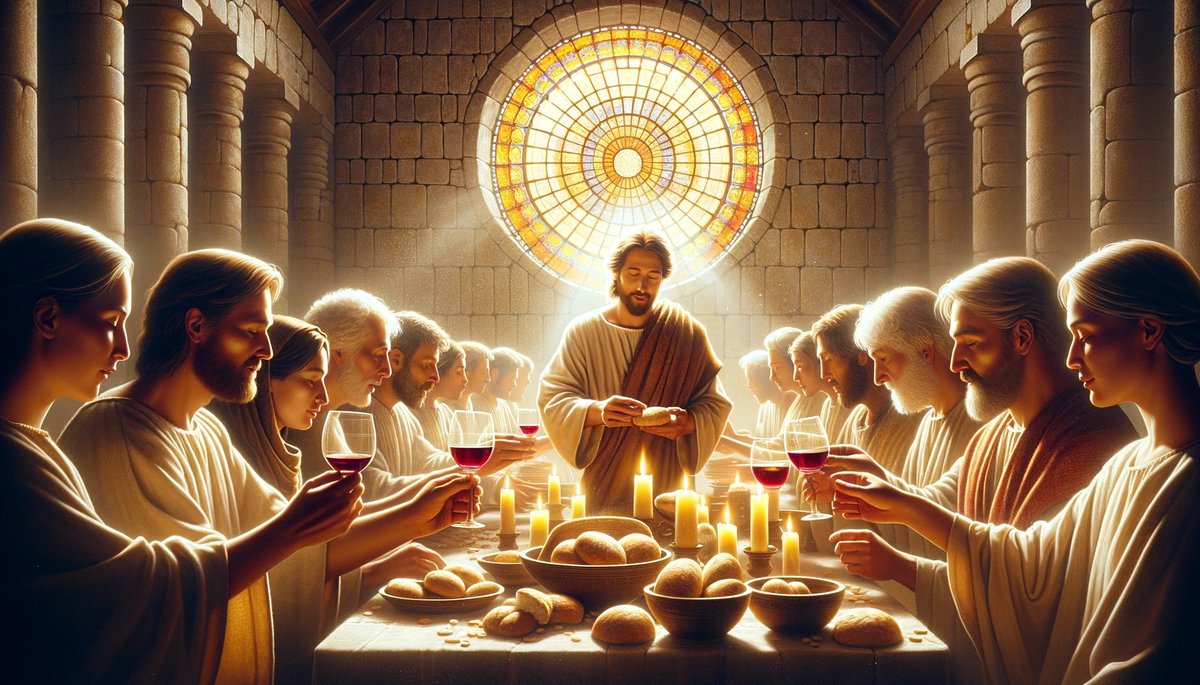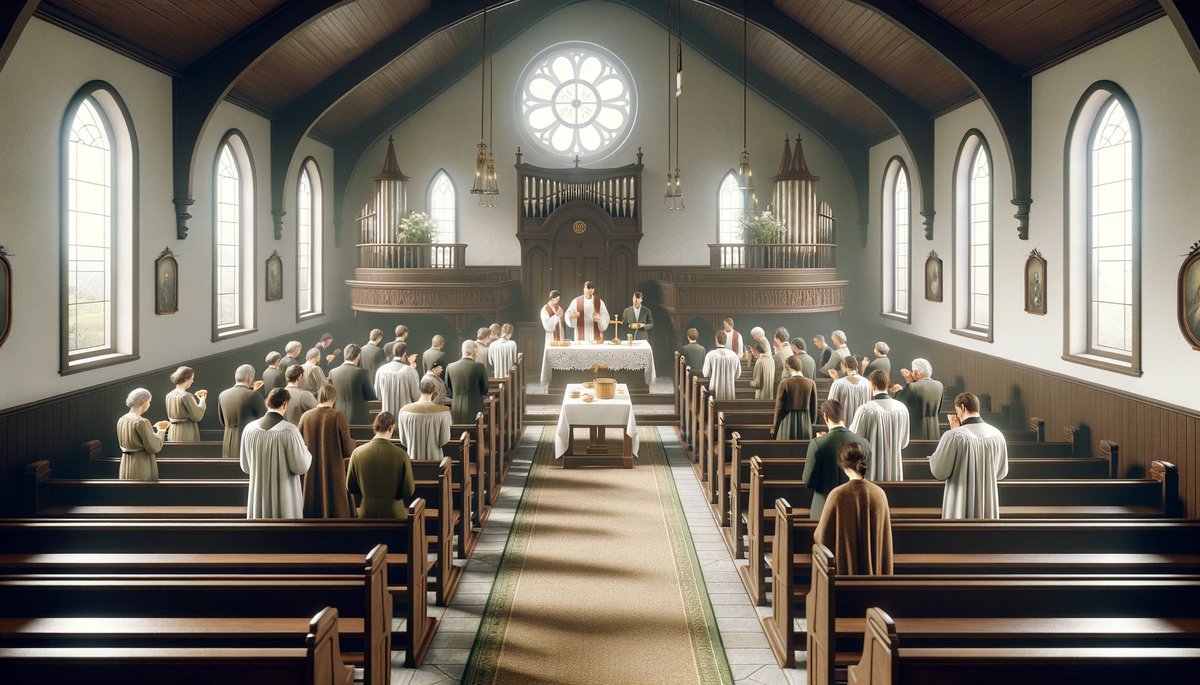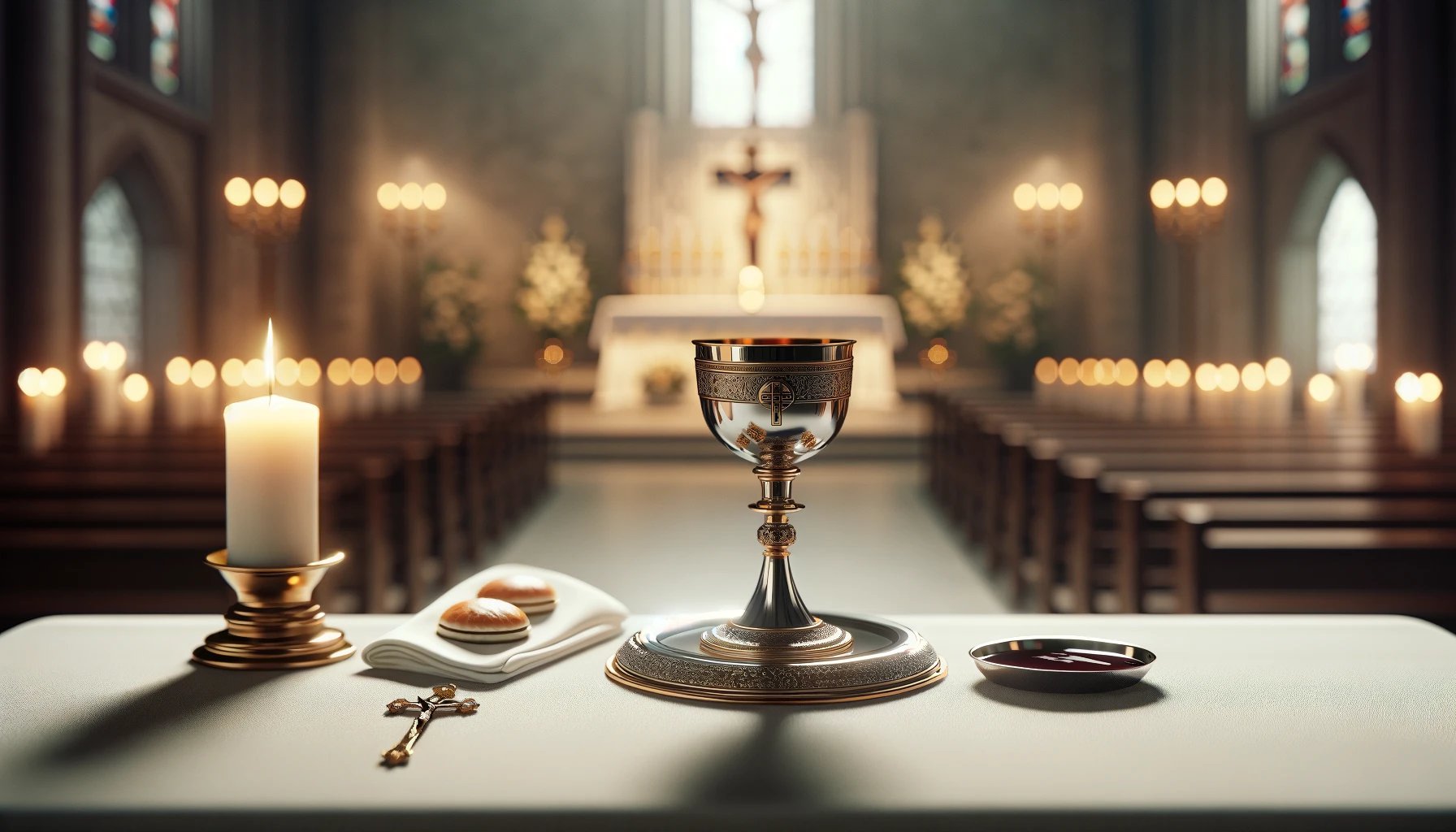Home>Theology and Spirituality>When Should Catholics Kneel After Communion


Theology and Spirituality
When Should Catholics Kneel After Communion
Published: February 24, 2024
Jason DeRose, Managing Editor at Christian.net, uses his expertise in religion and journalism to deepen understanding of faith's societal impacts. His editorial leadership, coupled with a strong academic background, enriches the platform’s diverse content, earning him recognition in both journalism and religious circles.
Discover the significance of kneeling after receiving Communion in the Catholic faith. Explore the theological and spiritual aspects of this practice. Gain insights into the timing and meaning of this reverent act.
(Many of the links in this article redirect to a specific reviewed product. Your purchase of these products through affiliate links helps to generate commission for Christian.net, at no extra cost. Learn more)
Table of Contents
Introduction
Kneeling after receiving communion is a deeply ingrained tradition in the Catholic faith, carrying profound theological and spiritual significance. This act of reverence and humility has been practiced for centuries, symbolizing the adoration and respect for the body and blood of Christ received during the Eucharistic celebration.
The tradition of kneeling after communion is a poignant expression of the reverence and awe that Catholics hold for the Eucharist, the central sacrament of the faith. It is a moment of intimate communion with the divine, a time for reflection, gratitude, and surrender to the profound mystery of the real presence of Christ in the consecrated bread and wine.
As we delve into the history, practice, and theological significance of kneeling after communion, we will uncover the rich tapestry of spiritual devotion and theological depth that underpins this revered tradition. From its historical roots to its contemporary practice, the act of kneeling after communion serves as a tangible embodiment of the Catholic belief in the real presence of Christ in the Eucharist and the reverence due to the sacred mystery of the body and blood of Christ.
This article will explore the evolution of this tradition, its theological implications, and the guidelines for when Catholics should kneel after receiving communion. By delving into these aspects, we aim to provide a comprehensive understanding of the significance and practice of kneeling after communion within the Catholic faith.
Read more: Kneeling When Receiving Communion
The History of Kneeling After Communion
The act of kneeling after receiving communion has deep historical roots within the Catholic tradition. Its origins can be traced back to the early centuries of Christianity when the practice of kneeling as a sign of reverence and adoration became intertwined with the reception of the Eucharist. In the early Church, kneeling was a common posture of prayer and reverence, and it naturally found its expression in the context of the Eucharistic celebration.
During the patristic era, the act of kneeling after receiving communion became more prevalent as the Church sought to emphasize the sacredness of the Eucharist and the reverence due to the body and blood of Christ. The early Christian theologians and Church Fathers, such as St. Augustine and St. John Chrysostom, wrote extensively about the profound mystery of the Eucharist and the need for devout adoration in its reception. This theological emphasis on the real presence of Christ in the Eucharist contributed to the development of the practice of kneeling after communion as a tangible expression of reverence for the divine presence.
The medieval period witnessed a further consolidation of the practice of kneeling after communion. The Church, through various liturgical reforms and ecclesiastical decrees, reinforced the significance of kneeling as a reverent posture during the reception of the Eucharist. The medieval theologians, including St. Thomas Aquinas, expounded on the theological underpinnings of the Eucharist, further solidifying the connection between the real presence of Christ and the act of kneeling in adoration.
The Council of Trent, convened in the 16th century, played a pivotal role in reaffirming the practice of kneeling after communion as an integral part of the Eucharistic liturgy. The council's decrees underscored the reverence and adoration owed to the Eucharist, and kneeling became the prescribed posture for receiving communion, reflecting the Church's unwavering commitment to upholding the sacredness of the Eucharistic mystery.
In contemporary times, the practice of kneeling after communion continues to be upheld in the Roman Catholic Church, reaffirming the enduring historical significance of this tradition. While variations in liturgical practices exist among different rites within the Catholic Church, the act of kneeling after receiving communion remains a poignant symbol of reverence, humility, and adoration for the real presence of Christ in the Eucharist.
The historical evolution of kneeling after communion reflects the deep spiritual and theological significance attributed to the Eucharist within the Catholic tradition, underscoring the enduring importance of this ancient practice in the life of the Church.
The Current Practice of Kneeling After Communion
In the present-day Catholic liturgical practice, the act of kneeling after receiving communion remains a deeply ingrained tradition, reflecting the reverence and adoration for the Eucharist. The General Instruction of the Roman Missal (GIRM), the authoritative guide for the celebration of the Eucharist in the Roman Rite of the Catholic Church, outlines the current norms regarding the posture of the faithful after receiving communion.
According to the GIRM, the faithful are directed to kneel after returning to their places following the reception of communion. This reverent posture of kneeling is maintained until the celebrant has finished the distribution of the Eucharist and the vessels have been placed on the altar. The act of kneeling after communion serves as a visible sign of adoration and respect for the real presence of Christ in the Eucharist, underscoring the sacred nature of the moment and the profound significance of the Eucharistic mystery.
While the GIRM provides the general directive for kneeling after communion, variations in liturgical practices exist among different dioceses and regions, allowing for some flexibility in the implementation of this norm. In certain instances, the local bishop may grant permission for the faithful to observe a different posture, such as standing, after receiving communion, taking into account pastoral considerations and the customs of the faithful in a particular region.
In addition, within the diversity of the Catholic Church, different rites and liturgical traditions may observe distinct practices regarding the posture after communion. For example, in the Eastern Catholic Churches, the faithful may follow the tradition of standing rather than kneeling after receiving communion, reflecting the unique liturgical heritage of these particular rites.
The current practice of kneeling after communion thus reflects a balance between universal norms and pastoral adaptations, acknowledging the rich diversity within the Catholic Church while upholding the essential reverence and adoration due to the Eucharistic presence of Christ. This practice serves as a visible and communal expression of the faithful's profound respect for the real presence of Christ in the Eucharist, uniting them in a shared posture of reverence and devotion during this sacred moment of the liturgy.
The Theological Significance of Kneeling After Communion
The act of kneeling after receiving communion holds profound theological significance within the Catholic tradition, serving as a tangible expression of the Church's rich Eucharistic theology and the reverence due to the real presence of Christ in the Eucharist. At its core, kneeling after communion embodies the theological truths of adoration, humility, and intimate communion with the divine.
Kneeling after receiving the body and blood of Christ signifies an act of adoration toward the Eucharistic Lord. It is a visible demonstration of the faithful's acknowledgment of the real presence of Christ in the consecrated elements. By assuming a posture of kneeling, the faithful express their profound reverence and awe in the presence of the divine, recognizing the Eucharist as the sacramental manifestation of Christ's abiding presence among his people.
Furthermore, the act of kneeling after communion embodies the theological virtue of humility. In humbling themselves before the Eucharistic Lord, the faithful acknowledge their dependence on God's grace and their unworthiness in the face of the sacred mystery they have received. This posture of humility reflects the profound spiritual disposition of the faithful, recognizing their need for divine mercy and their willingness to submit to the transformative power of the Eucharist in their lives.
Moreover, kneeling after communion fosters a sense of intimate communion with Christ. As the faithful kneel in adoration, they enter into a profound spiritual union with the Eucharistic Lord, embracing the invitation to encounter Christ in a deeply personal and transformative manner. This posture of intimacy and surrender allows the faithful to open their hearts to the transformative grace of the Eucharist, fostering a deeper communion with Christ and a more profound integration of the Eucharistic mystery into their lives.
In essence, the theological significance of kneeling after communion encompasses the themes of adoration, humility, and intimate communion with Christ, encapsulating the profound spiritual realities of the Eucharist. This revered tradition serves as a visible and communal expression of the Church's rich Eucharistic theology, inviting the faithful to encounter the living Christ in the sacrament and to respond with reverence, humility, and a deep longing for intimate communion with the Eucharistic Lord.
When Catholics Should Kneel After Communion
The question of when Catholics should kneel after receiving communion is guided by both liturgical norms and the theological significance of this revered tradition. According to the General Instruction of the Roman Missal (GIRM), the faithful are directed to kneel after returning to their places following the reception of communion. This reverent posture of kneeling is to be maintained until the celebrant has finished the distribution of the Eucharist and the vessels have been placed on the altar. The act of kneeling after communion serves as a visible sign of adoration and respect for the real presence of Christ in the Eucharist, underscoring the sacred nature of the moment and the profound significance of the Eucharistic mystery.
The directive to kneel after communion aligns with the theological understanding of the Eucharist as the sacramental presence of Christ. It signifies the faithful's acknowledgment of the real presence of Christ in the consecrated elements and their profound reverence and awe in the presence of the divine. This act of adoration is not merely a customary practice but a profound expression of faith in the living presence of Christ in the Eucharist.
While the GIRM provides the general directive for kneeling after communion, variations in liturgical practices exist among different dioceses and regions, allowing for some flexibility in the implementation of this norm. In certain instances, the local bishop may grant permission for the faithful to observe a different posture, such as standing, after receiving communion, taking into account pastoral considerations and the customs of the faithful in a particular region. However, the fundamental reverence and adoration for the Eucharistic presence of Christ remain central to the post-communion posture, whether kneeling or standing.
In addition, within the diversity of the Catholic Church, different rites and liturgical traditions may observe distinct practices regarding the posture after communion. For example, in the Eastern Catholic Churches, the faithful may follow the tradition of standing rather than kneeling after receiving communion, reflecting the unique liturgical heritage of these particular rites. Despite these variations, the underlying reverence for the Eucharistic presence of Christ remains a unifying element across the diverse expressions of post-communion posture within the Catholic Church.
In essence, the question of when Catholics should kneel after communion is intricately linked to the theological understanding of the Eucharist and the liturgical norms that guide the posture of the faithful. Whether kneeling or standing, the overarching principle remains the profound reverence and adoration for the real presence of Christ in the Eucharist, inviting the faithful to respond to this sacred mystery with hearts uplifted in awe and gratitude.
Read more: Should You Kneel When Receiving Communion
Conclusion
In conclusion, the act of kneeling after receiving communion holds profound significance within the Catholic tradition, reflecting the rich tapestry of theological depth, historical continuity, and spiritual devotion that characterize the Eucharistic liturgy. From its early origins in the patristic era to its contemporary practice guided by the General Instruction of the Roman Missal, the tradition of kneeling after communion embodies the enduring reverence and adoration for the real presence of Christ in the Eucharist.
The historical evolution of this tradition underscores its integral role in expressing the Church's unwavering commitment to upholding the sacredness of the Eucharistic mystery. The theological significance of kneeling after communion encompasses themes of adoration, humility, and intimate communion with Christ, inviting the faithful to encounter the living Christ in the sacrament and to respond with reverence, humility, and a deep longing for intimate communion with the Eucharistic Lord.
While variations in liturgical practices exist among different dioceses and rites within the Catholic Church, the fundamental reverence for the Eucharistic presence of Christ remains central to the post-communion posture, whether kneeling or standing. This diversity reflects the richness of the Church's liturgical heritage while upholding the essential reverence and adoration due to the Eucharistic presence of Christ.
Ultimately, the tradition of kneeling after communion serves as a visible and communal expression of the Church's rich Eucharistic theology, inviting the faithful to encounter the living Christ in the sacrament and to respond with hearts uplifted in awe and gratitude. It is a poignant reminder of the profound mystery of the Eucharist and a tangible expression of the faithful's unwavering devotion to the real presence of Christ in the Eucharist.
In embracing this tradition with reverence and humility, Catholics are invited to deepen their spiritual communion with Christ, fostering a profound encounter with the Eucharistic Lord and allowing the transformative grace of the Eucharist to permeate their lives. As the faithful kneel in adoration after receiving communion, they participate in a communal act of reverence, joining their hearts and voices in a symphony of adoration and praise for the Eucharistic Lord, who continues to nourish, sustain, and transform the life of the Church and its faithful.



